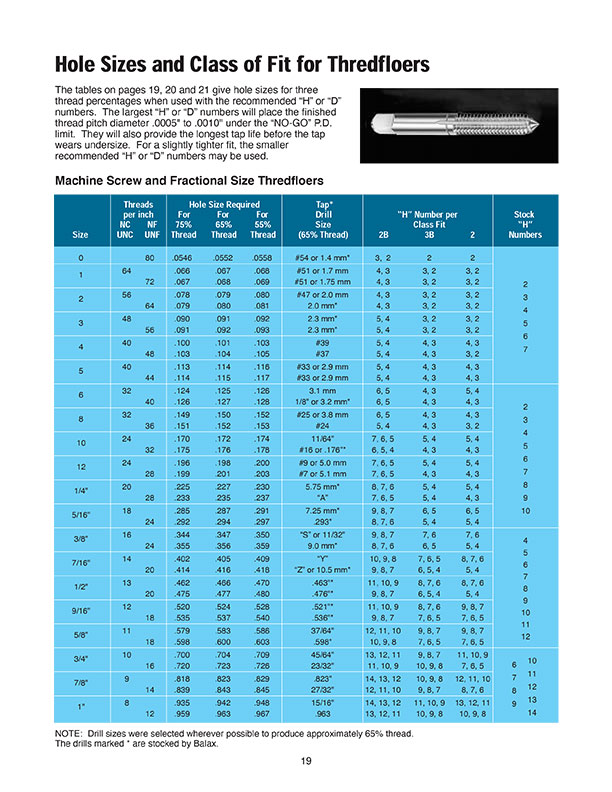Tapped Hole Diameter: Proper tapped hole diameter is crucial for maintaining high productions rates and long tap life. In many cases, one or two thousandth difference in hole diameter will make a major difference in the over all performance of a tapping die. This is particularly true when formed taps are used, which account for ninety-five percent of all in die tapping dies. Example: 10-32 form tap with a 65% thread uses a .176 diameter hole. A one thousandth decrease in diameter or .175 hole increases the percentage to 75%. This demonstrates how only a few thousandths difference in tapped hole diameter can make a major difference in the percentage of thread. As a general rule, a tapping die will run best when the lowest expectable thread percentage is used. It should also be noted that a roll form thread would consistently out torque a cut thread of the same percentage, which can result in using a lower percentage thread and still maintaining the torque requirements of the tapped hole. It is also important to remember when determining proper hole size that a cutting tap uses a much smaller hole then a form tap. The ³H² classification of the tap should also be taken into consideration when determining hole size. Higher ³H² classifications will require a larger diameter tapped hole.
19th Ave New York, NY 95822, USA


